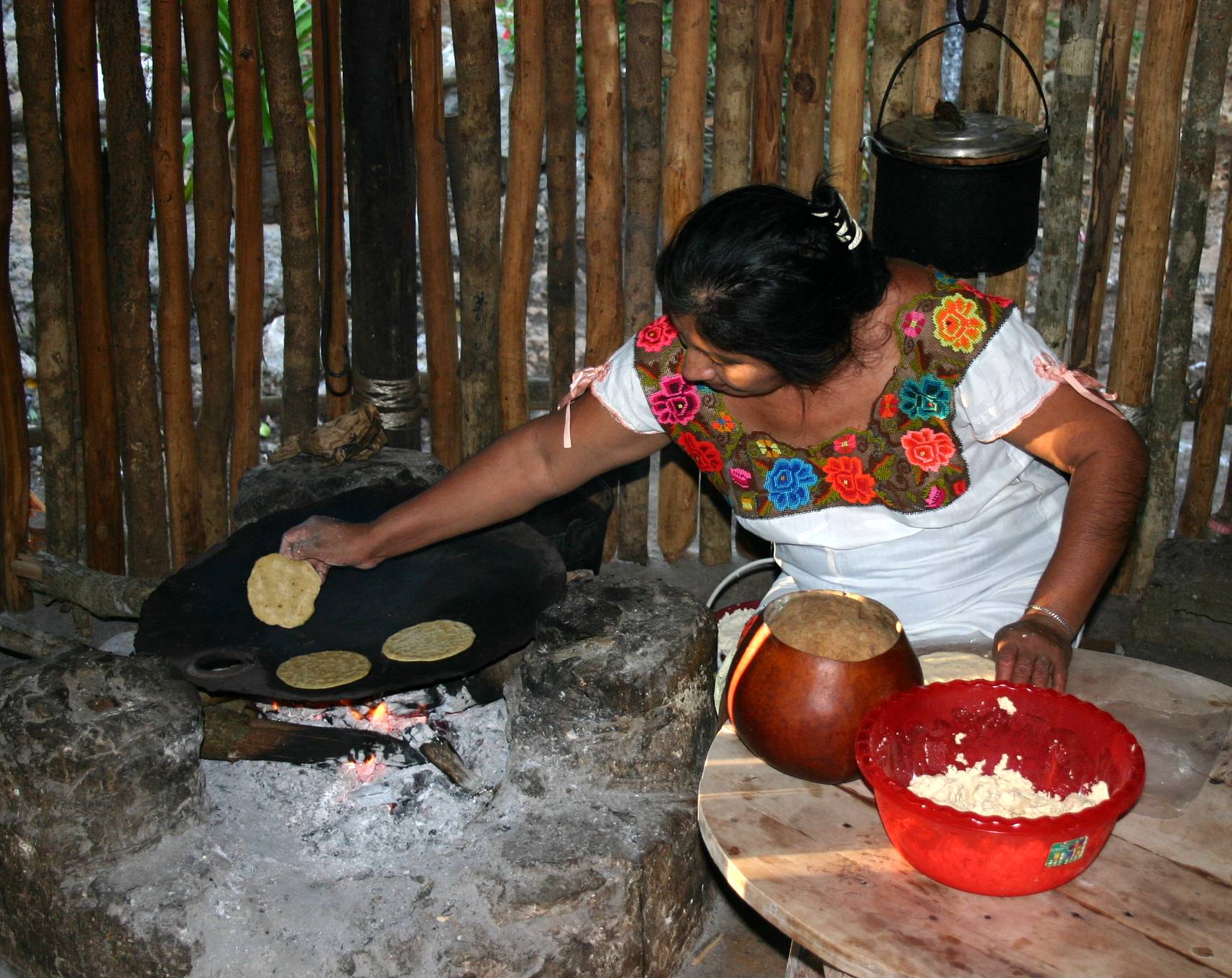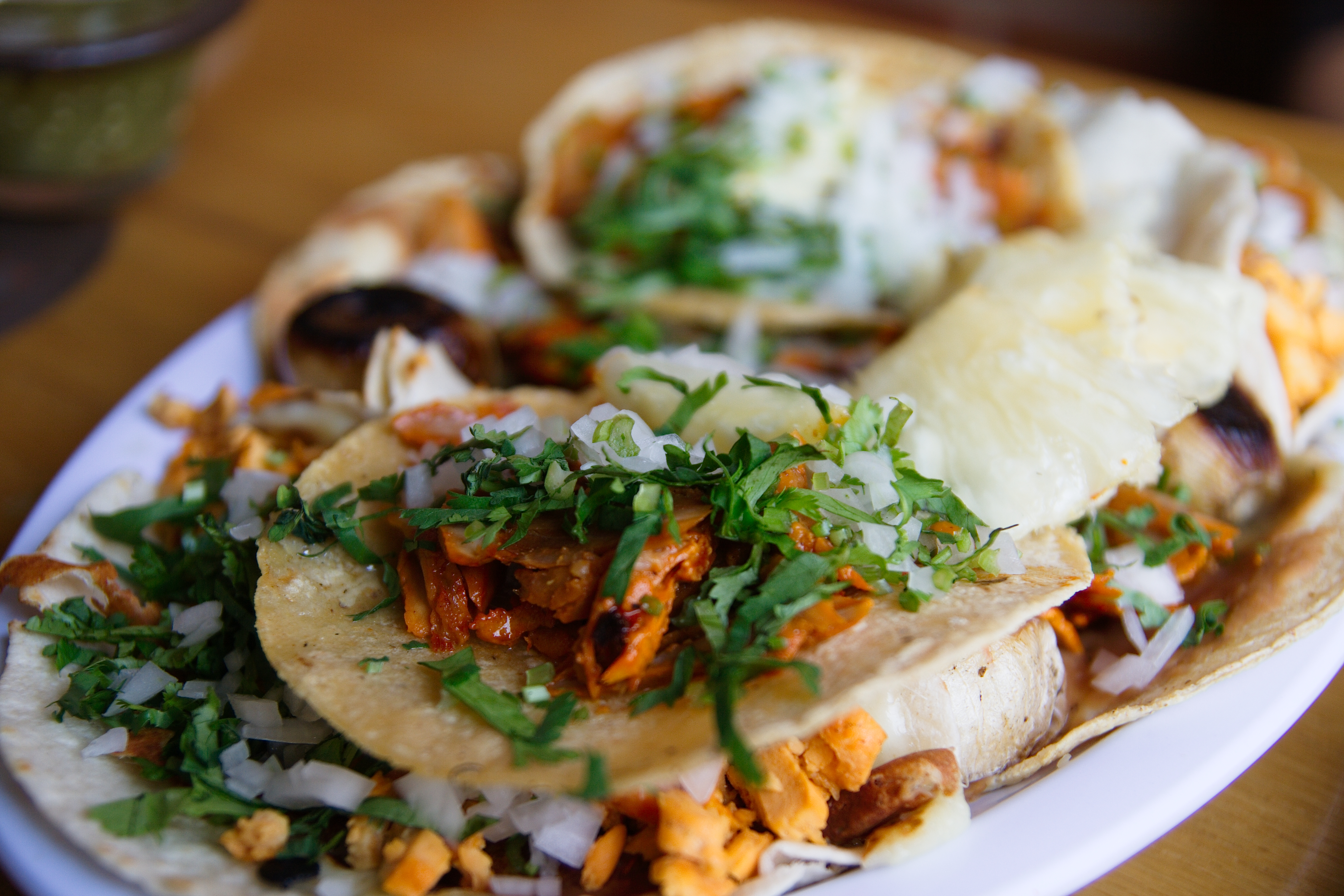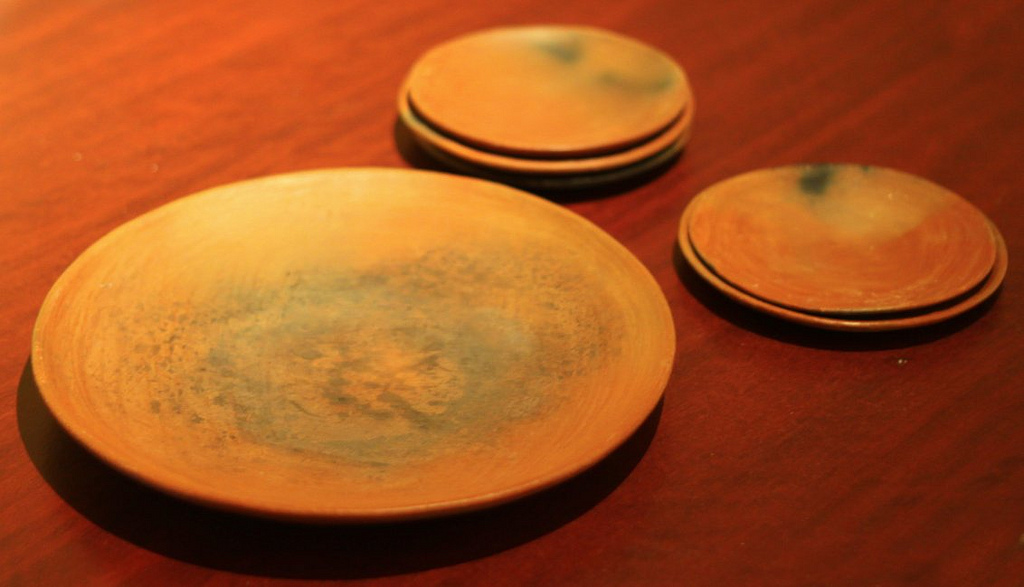|
Tortilla
A tortilla (, ) is a thin, circular unleavened flatbread from Mesoamerica originally made from maize hominy meal, and now also from wheat flour. The Aztecs and other Nahuatl speakers called tortillas ''tlaxcalli'' (). First made by the indigenous peoples of Mesoamerica before colonization, tortillas are a cornerstone of Mesoamerican cuisine. Corn tortillas in Mesoamerica are known from as early as 500 BCE. Etymology The word ''tortilla'' is derived from the Spanish word ''torta'', meaning "cake," plus the diminutive -''illa''; as a result, the word means "little cake" in Spanish. Varieties Corn Tortillas made from nixtamalized maize meal (''masa de maíz'') are the oldest variety of tortilla. They originated in Mexico and Central America, and remain popular throughout the Americas. Peoples of the Oaxaca region in Mexico first made tortillas at the end of the Villa Stage (1500 to 500 BCE). Towards the end of the 19th century, the first mechanical utensils for making t ... [...More Info...] [...Related Items...] OR: [Wikipedia] [Google] [Baidu] |
Burrito
A burrito (, ) or burro in Mexico is, historically, a regional name, among others, for what is known as a taco, a tortilla filled with food, in other parts of the country. The term ''burrito'' was regional, specifically from Guanajuato, Guerrero, Michoacán, San Luis Potosí, Sonora and Sinaloa, for what is known as a ''taco'' in Mexico City and surrounding areas, and ''codzito'' in Yucatán and Quintana Roo. Due to the cultural influence of Mexico City, the term ''taco'' became the default, and the meaning of terms like ''burrito'' and ''codzito'' were forgotten, leading many people to create new meanings and folk histories. In modern times, it is considered by many as a different dish in Mexican cuisine, Mexican and Tex-Mex cuisine that took form in Ciudad Juárez, consisting of a flour tortilla wrapped into a sealed cylindrical shape around various ingredients. In Central and Southern Mexico, burritos are still considered tacos, and are known as ''tacos de harina'' ("wheat f ... [...More Info...] [...Related Items...] OR: [Wikipedia] [Google] [Baidu] |
Taco
A taco (, , ) is a traditional Mexican cuisine, Mexican dish consisting of a small hand-sized corn tortilla, corn- or Flour tortilla, wheat-based tortilla topped with a Stuffing, filling. The tortilla is then folded around the filling and finger food, eaten by hand. A taco can be made with a variety of fillings, including beef, pork, chicken, seafood, beans, vegetables, and cheese, and garnished with various condiments, such as salsa (sauce), salsa, guacamole, or sour cream, and vegetables, such as lettuce, coriander, onion, tomatoes, and Chili pepper, chiles. Tacos are a common form of antojitos, or Mexican street food, which have spread around the world. Tacos can be contrasted with similar foods such as burritos, which are often much larger and rolled rather than folded; taquitos, which are rolled and fried; or chalupas/Tostada (tortilla), tostadas, in which the tortilla is fried before filling. Etymology The origins of the taco are not precisely known, and etymologies for ... [...More Info...] [...Related Items...] OR: [Wikipedia] [Google] [Baidu] |
List Of Tortilla-based Dishes
This is a list of tortilla-based dishes and foods that use the tortilla as a primary ingredient. A tortilla is a type of soft, thin flatbread made from finely ground corn or wheat flour that comes from Mexico and Central America and traditionally cooked on a comal (cookware). Originally derived from the corn tortilla (''tortilla'' in Spanish means "small ''torta''", or "small cake"), a bread of maize which predates the arrival of Europeans to the Americas, the wheat tortilla, wheat flour tortilla was an innovation after wheat was brought to the New World from Spain while this region was the colony of New Spain. It is made with an unleavened, water-based dough, pressed and cooked like corn tortillas. Tortilla-based dishes * * * * * * * * * * * * French tacos * * * * * * * * * * * * * * * * * See also * Corn tortilla * List of bread dishes * List of Mexican dishes * Mexican street food * New Mexican cuisine * Tortilla warmer * Whea ... [...More Info...] [...Related Items...] OR: [Wikipedia] [Google] [Baidu] |
Flatbread
A flatbread is bread made usually with flour; water, milk, yogurt, or other liquid; and salt, and then thoroughly rolled into flattened dough. Many flatbreads are Unleavened bread, unleavened, although some are leavened, such as pita bread. A Serving size, serving of 85g (~3 ounces) of pita bread has 234 Calorie, calories. Flatbreads range from below one millimeter to a few centimeters thick so that they can be easily eaten without being sliced. They can be baked in an oven, fried in hot oil, grilled over hot coals, cooked on a hot pan, tava, Comal (cookware), comal, or metal griddle, and eaten fresh or packaged and frozen for later use. History Flatbreads were amongst the earliest food processing, processed foods, and evidence of their production has been found at ancient sites in Mesopotamia, ancient Egypt, and the Indus Valley Civilisation, Indus civilization. The origin of all flatbread baking systems are said to be from the Fertile Crescent in West Asia, where they would su ... [...More Info...] [...Related Items...] OR: [Wikipedia] [Google] [Baidu] |
Fajita
A fajita (; ), in Tex-Mex cuisine, is strips of any grilled meat, optionally served with strips of peppers and onions usually served on a flour or corn tortilla. The term originally referred to skirt steak, the cut of beef first used in the dish. Popular alternatives to skirt steak include chicken and other cuts of beef, as well as vegetables instead of meat. In restaurants, the meat is usually cooked with onions and bell peppers. Popular condiments include shredded lettuce, sour cream, guacamole, salsa, pico de gallo, shredded cheese, refried beans, and diced tomatoes. "Tacos de arrachera" is applied to the northern Mexican variant of the dish. Etymology ''Fajita'' is a Tex-Mex or Tejano diminutive term for little strips of meat cut from the beef skirt, the most common cut used to make fajitas. The word ''fajita'' is not known to have appeared in print until 1971, according to the ''Oxford English Dictionary''. (The word is Spanish for "strip", or "belt", from the Latin ... [...More Info...] [...Related Items...] OR: [Wikipedia] [Google] [Baidu] |
Unleavened Bread
Unleavened bread is any of a wide variety of breads which are prepared without using rising agents such as yeast or sodium bicarbonate. The preparation of bread-like non-leavened cooked grain foods appeared in prehistoric times. Unleavened breads are generally flat breads. Unleavened breads, such as the tortilla and roti, are staple foods in Central America and South Asia, respectively. Unleavened sacramental bread plays a major part in Christian liturgy and Eucharistic theology. Religious significance Unleavened breads have symbolic importance in Judaism and Christianity. Jews and Christians consume unleavened breads such as Matzah during Passover and Eucharist, respectively, Jews as commanded in Exodus 12:18. Per the Torah, they were instructed, "Seven days shall there be no leaven found in your houses: for whosoever eateth that which is leavened, even that soul shall be cut off from the congregation of Israel, whether he be a stranger, or born in the land." Canon L ... [...More Info...] [...Related Items...] OR: [Wikipedia] [Google] [Baidu] |
Arepa
''Arepa'' () is a type of flatbread made of ground maize dough stuffed with a filling, eaten in northern parts of South America since pre-Columbian times, and notable primarily in the cuisine of Colombia and Venezuela, but also present in Bolivia, Ecuador, and Central America. Arepa is commonly eaten in those countries and can be served with accompaniments, such as cheese, '' cuajada'' (fresh cheese), various types of meat, avocado, or (deviled ham spread). It can also be split to make sandwiches. Sizes, maize types, and added ingredients vary based on preparation. It is similar to the Mexican '' gordita,'' the Salvadoran '' pupusa'', the Ecuadorian , and the Panamanian or . Origins The is a pre-Columbian dish from the area that is now Colombia, Panama and Venezuela. Instruments used to make flour for the , and the clay slabs on which they were cooked, were often found at archaeological sites in the area. Although it has not been specified in which country an ' was cooked ... [...More Info...] [...Related Items...] OR: [Wikipedia] [Google] [Baidu] |
Chapati
Chapati (alternatively spelled chapathi; pronounced as IAST: ), also known as ''roti'', ''rooti'', ''rotee'', ''rotli'', '' rotta'', ''safati'', ''shabaati'', ''phulka'', ''chapo'' (in East Africa), ''sada roti'' (in the Caribbean), ''poli'' (in Marathi), and ''roshi'' (in the Maldives), is an unleavened flatbread originating from the Indian subcontinent and is a staple in India, Nepal, Bangladesh, Pakistan, Kyrgyzstan, Sri Lanka, the Arabian Peninsula, East Africa, and the Caribbean. Chapatis are made of whole-wheat flour known as atta, mixed into dough with water, oil (optional), and salt (optional) in a mixing utensil called a '' parat'', and are cooked on a '' tava'' (flat skillet).Nandita Godbole, 2016Roti: Easy Indian Breads & Sides.Chitra Agrawal, 2017Vibrant India: Fresh Vegetarian Recipes from Bangalore to Brooklyn, page 35. It is a common staple in the Indian subcontinent as well as amongst expatriates from the Indian subcontinent throughout the world. Chapatis we ... [...More Info...] [...Related Items...] OR: [Wikipedia] [Google] [Baidu] |
Masa
''Masa'' or ''masa de maíz'' (; ) is a dough made from ground nixtamalized maize. It is used for making corn tortillas, '' gorditas'', '' tamales'', '' pupusas'', and many other Latin American dishes. It is dried and powdered into a flour form called ''harina de maíz'' or ''masa harina''. Masa is reconstituted by mixing with water before using it in cooking. In Spanish, ''masa harina'' translates simply to 'dough flour', and can refer to many other types of dough. Preparation Field corn grain is dried and then treated by cooking the mature, hard grain in a diluted solution of slaked lime (calcium hydroxide) or wood ash, and then letting it soak for many hours. The soaked maize is then rinsed thoroughly to remove the unpalatable flavor of the alkali. This process is nixtamalization, and it produces hominy, which is ground into a relatively dry dough to create fresh masa. The fresh masa can be sold or used directly, or can be dehydrated and blended into a powder to create m ... [...More Info...] [...Related Items...] OR: [Wikipedia] [Google] [Baidu] |
Lavash
Lavash (; ) is a thin flatbread usually leavened, traditionally baked in a tandoor (''tonir'' or ''tanoor'') or on a '' sajj'', and common to the cuisines of South Caucasus, West Asia, and the areas surrounding the Caspian Sea. Lavash is one of the most widespread types of bread in Armenia, Azerbaijan, Iran, and Turkey. The traditional recipe can be adapted to the modern kitchen by using a griddle or wok instead of the ''tonir''. In 2014, "Lavash, the preparation, meaning and appearance of traditional bread as an expression of culture in Armenia" was inscribed in the UNESCO Representative List of the Intangible Cultural Heritage of Humanity. In 2016, the making and sharing of flatbread (lavash, katyrma, jupka or yufka) in communities of Azerbaijan, Iran, Kazakhstan, Kyrgyzstan, and Turkey was inscribed on the list as well. Lavash is similar to ''yufka'', but in Turkish cuisine lavash (''lavaş'') is prepared with a yeast dough while ''yufka'' is typically unleavened. Ety ... [...More Info...] [...Related Items...] OR: [Wikipedia] [Google] [Baidu] |
Comal (cookware)
A comal is a smooth, flat griddle typically used in Mexico, Central America, and parts of South America, to cook tortillas and arepas, toast spices and nuts, sear meat, and generally prepare food. Similar cookware is called a '' budare'' in South America. Some comals are concave and made of ''barro'' (clay). These are still made and used by the indigenous peoples of Mexico and Central America. Comals are similar to the American griddle or the Indian tawa, and are often used and named interchangeably with these. Comals for home use are generally made from heavy cast iron, and sized to fit over either one burner on the stovetop (round) or two burners front to back (elongated oval). In many indigenous and pre-Hispanic cultures, the comal is handed down from grandmother to mother to daughter, the idea being that a comal tempered over many years of use will heat faster and cook cleaner. History The history of such cooking methods dates back to the pre-Columbian era, when powde ... [...More Info...] [...Related Items...] OR: [Wikipedia] [Google] [Baidu] |







